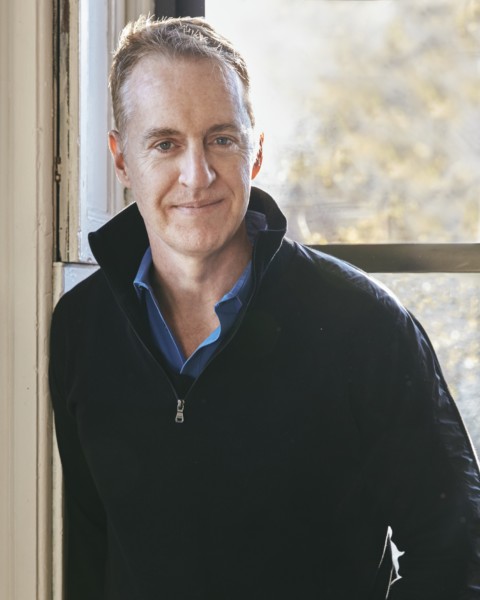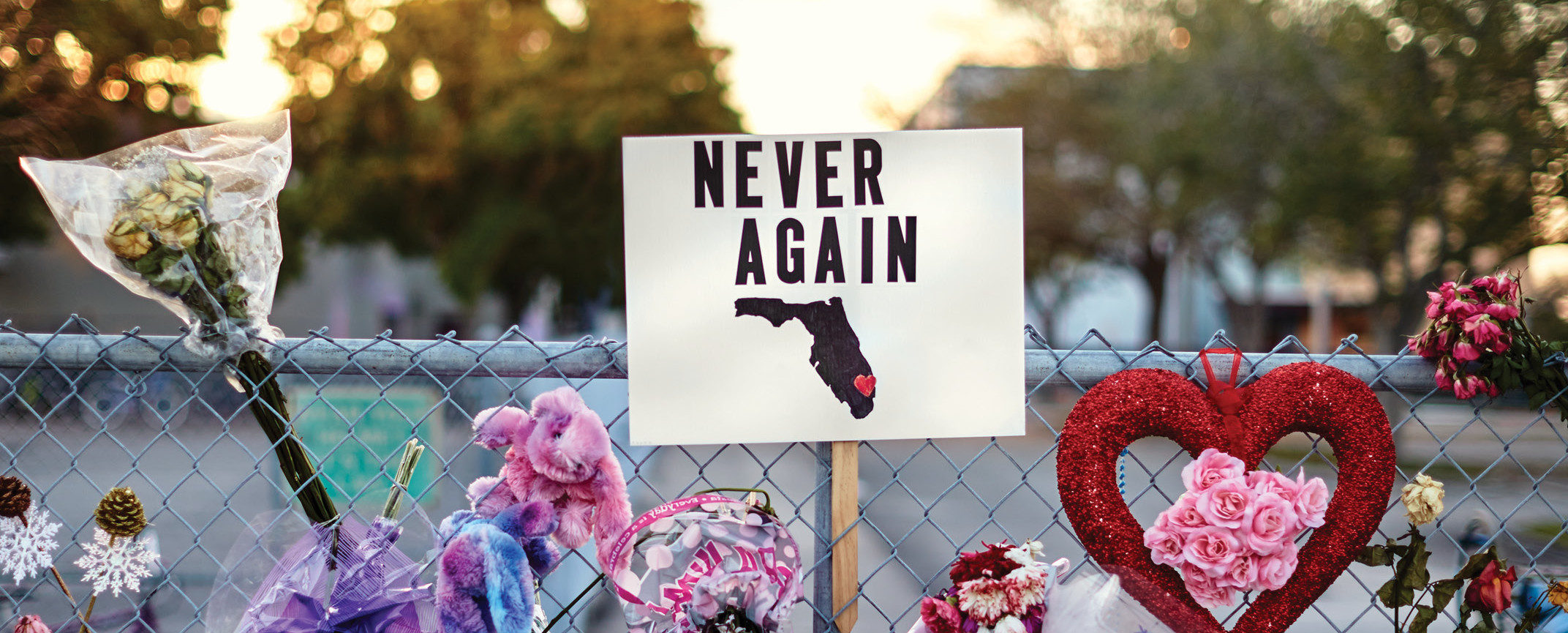Sign up for The Media Today, CJR’s daily newsletter.
On Valentine’s Day 2018, the lives of everyone at Marjory Stoneman Douglas High School in Parkland, Florida, changed when a gunman shot and killed 17 students and staff members. That day’s tragedy, which media reports termed “all too familiar,” gave way to a vigorous national effort to strengthen gun-control laws, spearheaded by Parkland students.
Dave Cullen—author of Columbine, about the 1999 mass shooting in Littleton, Colorado—documents that movement in his new book, Parkland: Birth of a Movement. For 10 months, Cullen got to know David Hogg, Emma Gonzalez, Jaclyn Corin, and other Marjory Stoneman Douglas students who formed Never Again MSD, organized the March For Our Lives protests, and tied the country’s concerns over gun control to the violence at their school. Throughout his book, Cullen reminds readers that the Marjory Stoneman Douglas survivors and activists are still kids who work through immense grief.
Cullen, who originally went to Parkland for five weeks to cover students’ organizing efforts for Vanity Fair, writes in an introduction of his frustration with school-shooting coverage and his experience with second-hand post-traumatic stress disorder. “At first it was hard,” he tells CJR of his reporting trip to Parkland. “But the more time I was there, I started to realize, around March or April, that this is actually healing me.” Rather than covering a shooting, Cullen says, he realized he was covering “a response to it, and a movement.”
Cullen spoke with CJR about how he gained credibility with his subjects, what assumptions reporters brought to Parkland, and where the media continues to fail in its coverage of gun violence. This interview has been edited for length and clarity.
When I got there, everybody in the world was there, and I was trying to figure out how to get access. How do I get the kids to talk to me? I was also thinking, What does the world need me here for?
You mentioned that this moment helped you heal. Why is that?
I felt hopeless and just bleak since Columbine. It was 19 years into this, and it’s not like we had tried and failed. We had done nothing, which is just disgraceful. We failed to pass gun-control legislation. We taught kids to hide better. When I think about lockdowns, it makes me more and more angry. That’s the solution? Turn off the lights and close the door? I have real doubts about what that really does.
When I met the Parkland kids, they were all really bright, creative, and they were doing something powerful. I spent a lot of time with them in all types of situations and I never saw them go into their heads. It was really joyful to be with them. I would really get off the phone after doing marathon interviews and notice I was in an insanely good mood because what a privilege it was to go inside their heads and talk about what’s going on.
You spent about ten months with these kids and their families. How did you begin to organize their story and put the book together?
I was on seven-day weeks for a few months straight. I took a handful of trips to Parkland and followed the kids to some of the stops on the [March for Our Lives] tour, did lots of phone interviews and followed them on social media. At one point I printed out all of the interviews and different versions of the Vanity Fair stories I had done. It was probably about 500 pages of interviews. I cut and pasted and circled lines, phrases, and paragraphs I liked and then I had my intern come over and help assemble them into chapters. I also began working with a storyboard in April, so I put up pictures of big moments and filled in the details. The march itself would be a huge thing, and I figured after the midterms would become an epilogue.
At one point I was feeling like, is this really a story or just a bunch of things that happened? But it started to come together when I followed them to Denver during the summer tour. They had been doing this for about six months. Some of them were sort of sick of themselves and others were really invigorated. So I could really see they were reaching a sort of turning point in their organization. I could see this was the arc to the story.
How did you gain your sources’ trust?
When I got there, everybody in the world was there, and I was trying to figure out how to get access. How do I get the kids to talk to me? I was also thinking, What does the world need me here for? There’s like 100 or 200 of us and we’re all writing the same story and we’re talking to the same sources. The answer that occurred to me was, I’m going to get my story because all of these parachute journalists are going to go home and I’m going to come back. With every story, people always appreciate when you stick around.
One key early decision that I made that really helped was attending an organizational meeting. I was on the phone with them and Jackie [Corin] was like, “Well, we’re going to have this organizational meeting, but that’s really boring, you wouldn’t want to come to that,’ and I was like, ‘That is exactly what I want to see.’ I was already envisioning all these stories about these kids doing the marches. I wanted to know, How did that happen? What does it take? Are the parents freaking out or are they letting them go? Hardly any press was at that meeting, so I kind of had them to myself and, you know, I guess they actually saw me.
The last point is treating any survivor with respect and empathy. Especially with kids, I think, just treating them like other people. I never treated them like kids. It goes a long way.

Dave Cullen. Photo by Justin Bishop.
Both in Columbine and in this book, you included very detailed notes at the end.
With Columbine, there was so much stuff and so many facts, and I just felt like it had to be documented. This time, it was sort of a combination of things. I get a lot of emails like, Oh, I really liked your notes. I’m a blabbermouth and like to tell stories, so sometimes I include whole stories of what happened because I thought it was kind of interesting. I pounded out those notes in like two days. It ended up being about 90 pages. Certain readers are going to love it and some are going to ignore it. I was never concerned about “fake news,” that never entered my head. At this point, you either believe me or you don’t.
In the book, you mention that a lot of reporters came to Parkland with certain assumptions, or had already formed the narrative in their minds and were just on the scene to get the quotes they needed. What assumptions did you have before you got to know the kids?
It’s hard to remember. It feels like a million years ago. What did I think before? I remember the first time seeing David [Hogg] in the Time Warner elevator on the monitor thinking, What? That’s not a day-one survivor. There was a certain assumption that there is a type of day-one survivor and [the students] were breaking that mold. I didn’t have it for very long because then I was like, OK, something is going on here.
The other assumption I had throughout was thinking the kids were coping and doing better than they really were. I try not to have many assumptions. I try to go in as a blank slate.
You have focused on school shootings for the past two decades. What is the media doing better? What are journalists still really missing?
Anchors will remind the audience to keep in mind that a lot of things that we hear in the first hour turn out to be wrong. I’m really grateful to hear anchors saying that.
We still cover the killers way too much. It’s gotten better in the last three to five years, but we’re still so far from where we ought to be. I don’t understand why it’s so damn hard to figure out and why it’s taking so long. I have people on Twitter arguing that journalists should never withhold facts. Our whole job is choosing which facts to report. If you do a 800-word story on a car accident, do you say what both drivers were wearing? Do you say what their hair color was? It’s like a million details, and you’re selecting like 50 of them.
We’re part of the problem, and we’re complicit too. It’s like admitting if we have a part in it then we have blood on our hands. That’s something that maybe people don’t want to admit either.
ICYMI: Teenage journalists memorialize hundreds of gun-violence victims
Has America ever needed a media defender more than now? Help us by joining CJR today.



